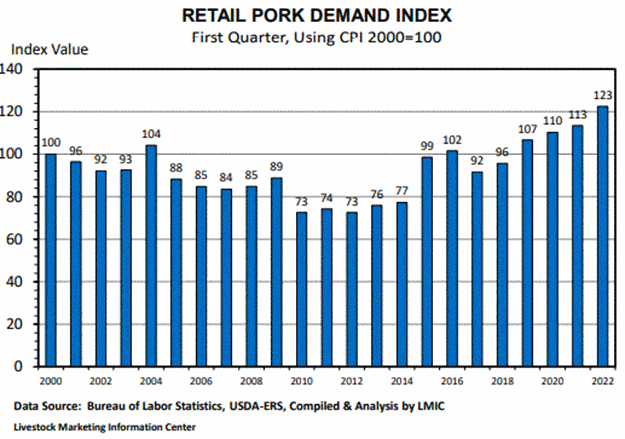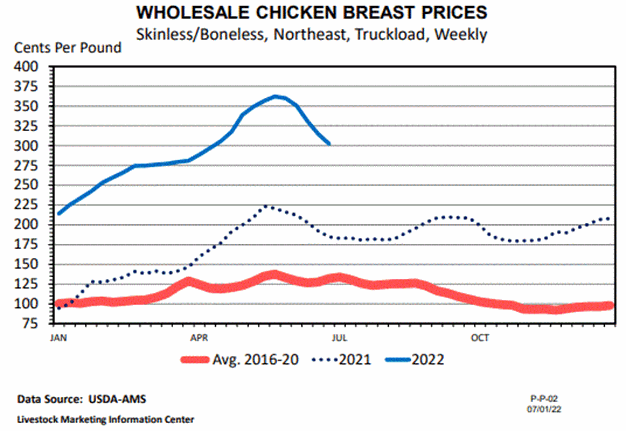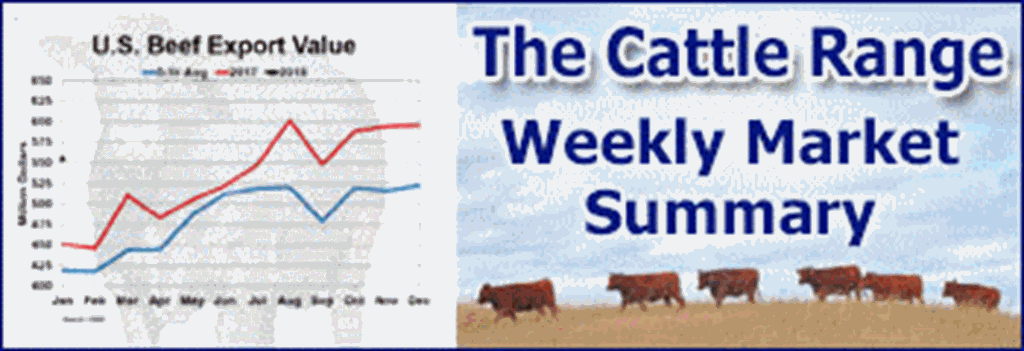LMIC estimates U.S. consumer retail all fresh beef demand quarterly using a demand index that looks at the change in prices relative to expectation, and removes general price inflation. LMIC uses a base year of 2000, which equals an index value of 100, numbers above that value indicate stronger demand and numbers below indicate weaker demand.
Using this index method, we can assess how retail beef has moved since the pandemic. According to the index calculation demand set a record high index value across all quarters, and peaked in the fourth quarter of 2021 at an index value of 138. On an annual basis, the last two years retail beef demand hit the new consecutive highs since 2000. First quarter of 2022 is off to a rapidly higher pace, with a meat demand index value of 134 compared to 120 last year. Second quarter data will be available for the second quarter once the Consumer Price Index data has concluded for the quarter, which should be released next week. LMIC also looks at Choice beef demand separately. First quarter choice beef demand also jumped, up 17 index points from last year. The average over the last 20 years has been less than half a point year-over-year in the index.
The all fresh pork index saw a first quarter buoy of 123, up from 113 the prior year. Annually, 2021, 2020, and 2019 all set new annual highs for retail pork demand. Those three years showed quarters 1, 3, and 4 increasing very sharply, while the second quarter index values pulled back rather abruptly from a high 2019.

Second quarter retail beef demand index values are expected to be strong as well. Retail prices also continue to remain elevated. Retail pork prices also increased in the second quarter implying that second quarter may be another strong pork demand quarter as well. It’s important to note that these demand indexes look at the aggregate price of all fresh beef and pork, and may not capture some of the demand subtleties such has shifting cut or quality choices within the beef or pork complex.

Not pictured here today but the U.S. consumer continues to demand higher volumes of chicken. Even with high prices in the last three years, chicken at the retail level has moved extremely well. Research has shown chicken own price elasticity is less elastic than beef or pork, meaning as price increases the quantity demanded is slower to respond. Chicken consumption on a per capita basis has climbed since the base year of 2000 and in 2021 was 20 pounds higher than 2000. In the face of high inflation, it’s expected that chicken will continue to move well at the retail level, but in recent weeks certain wholesale cut prices have come off previous peaks. Boneless skinless chicken breast wholesale prices are down 60 cents per pound in the last six weeks.
Source: Steiner Consulting Group












